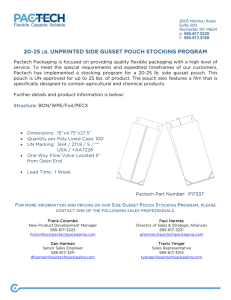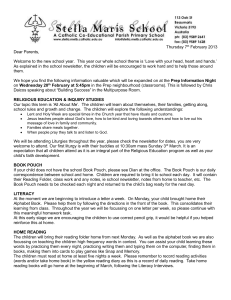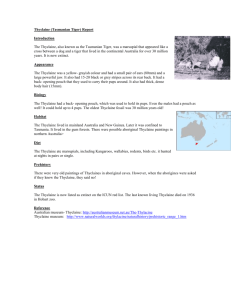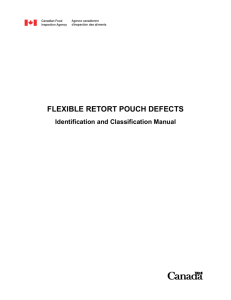Reheating and Sterilization Technology for Food, Waste and Water
advertisement
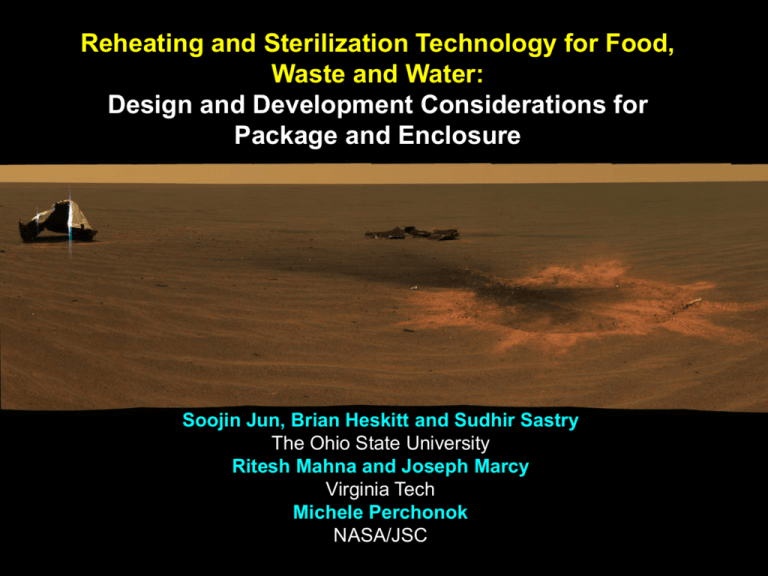
Reheating and Sterilization Technology for Food, Waste and Water: Design and Development Considerations for Package and Enclosure Soojin Jun, Brian Heskitt and Sudhir Sastry The Ohio State University Ritesh Mahna and Joseph Marcy Virginia Tech Michele Perchonok NASA/JSC Introduction • Long-duration space missions – Food systems to provide the crew with a palatable, nutritious, and safe food system and minimize volume, mass, and waste – A thermal process in need of food reheating to serving temperature, or sterilization during in-transit and on evolved planetary base – Food package to pose a disposal problem after use Introduction • Ohmic heating – Electrical energy to thermal energy with higher energy efficiency (close to 100%) • Reusable pouch – Sterilized to yield food quality with long shelf life – Enabled ohmic treatment in transit – Used to contain and sterilize waste post-food consumption Objectives • Develop and optimize a pulsed ohmic heating system and reusable pouch – Minimize ESM – Eliminate gas generation – Eliminate electrode corrosion • Numerical Approach – Optimize electrode configuration • Most uniform, yet rapid heating thermal profiles – Predict and prevent worst-scenario during food heating Pulsed ohmic heater JP6 1 JP4 2 15 14 13 -VOUT -VOUT +VOUT +VOUT -VIN -VIN HL02R15S15Y JP3 2 3 4 U1 IRAMX16UP60A JP5 4 PHASE2 1 2 Isolation 3 PHASE1 JP2 1 AC-DC CONVERTER 15V 120V_60Hz Output 10 11 12 15 14 13 24 23 22 +VIN NU NU +VIN NU NU -VOUT -VOUT +VOUT +VOUT -VIN -VIN HL02R15S15Y 10 11 12 1 2 3 24 23 22 +VIN NU NU +VIN NU NU 1 2 3 +VIN NU NU -VOUT -VOUT +VOUT +VOUT -VIN -VIN HL02R15S15Y +VIN NU NU 1 2 3 Isolation 10 11 12 JP1 15 14 13 IGBT output waveform 24 23 22 Circuit diagram 1 2 3 4 4 5 7 8 10 AC-DC CONVERTER 120V 12 13 14 15 16 17 18 19 20 21 22 23 3 5 J Q U4A 4027 1 K Q 2 VBU VSU V+ LEU LEV LEW HINU HINV HINW LINU LINV LINW ITRIP VCC VSS U3A 3 2 U3A 4011 4 6 5 4 OPTO ISOLATOR-A VBV VSV 1 CLK R 6 ISO1 S 7 R1 RESISTOR F_INPUT VBW VSW 4011 IGBT module Input TTL signal Compact design Ideal for minimizing electrochemical reaction Frequency: 10 kHz Pulse duty ratio: 0.2 Ohmic heater enclosure and frame Reusable pouch First realized version Flexible package Foil electrodes Newly designed version Electrode materials • Degassing and ohmic treatment of NaCl solution to observe likely gas generation at the interface between solution and electrodes • Aluminum – Generate lots of gas – Serious self-corrosion • Stainless steel – Food grade 300 series – Little gas generation with ideal wave conditions Secure bond in electrode-package construction • Hot press to seal stainless steel electrode pouches – However, electrodes unlikely to adhere to inner PE layer of pouches Sealant Stainless steel foil PE Aluminum foil PE Nylon Multi-layered laminate Secure bond in electrode-package construction • PE extruded on stainless steel foil – Contact select vendors • Use of food grade adhesive – Long curing time • Etching one side of foil to enhance the surface energy Electrical conductivities and locations of temperature sensors 0.027 0.024 Chicken noodle soup 0.021 1/2 L 0.018 9.18 V/cm 15.8 V/cm 28.4 V/cm Electrical conductivity (S/cm) 0.015 0.012 Y 3 2 1 0.009 0.030 Black beans X 0.025 1 0.020 8.4 V/cm 14.2 V/cm 0.015 0.010 10 20 30 40 50 60 o Temperature ( C) 70 80 90 2 3 4 5 2D Electrode configuration and field distribution Pouch A Electrode V/m Pouch B Pouch C Comparison of temperature profiles of chicken noodle soup between simulation and measurement data Temperature (oC) Pouch A Pouch C X Temperature (oC) Pouch B Temperature (oC) Y X Y X : Experimental data Y : Simulation data 2D temperature distribution and cold zones Pouch A Pouch B Pouch C oC 80 40 12 Predicted temperature distributions and cold zone in Pouch B with different electrode widths Dimensionless electrode width Temperature distribution Potential cold zone 0.063 0.127 0.147 0.202 0.268 : Electrode Optimization of electrode width with respect to cold zone ratio, power consumption, average temperature, and temperature variation 70 1.0 65 0.8 55 300 50 250 50 45 40 0.4 35 0.2 200 150 100 30 40 50 35 0.0 0.05 0.10 0.15 0.20 0.25 25 0.30 Dimensionless electrode width Cold zone area ratio Average temperature (oC) Power (W) Temperature variation (oC) Power (W) 55 0.6 Average temperature (oC) 45 Cold zone area ratio Temperature variation (oC) 60 ESM estimation based on potential final product with optimized power consumption Mass1 (kg) Volume2 (m3) Power (kWe) Cooling (KWth) 3.98 0.012 0.15 0.15 Volume (kg/m3) Power (kg/kWe) Cooling (kg/kWth) Mars Transit Vehicle 9.16 237 Mars Descent / Ascent Lander 66.7 Surface Habitat Lander 9.16 System values Equivalencies4 Mission Type ESM (kg) Allocated ESM3 (kg) Percentage (%) 40 45.6 3614 1.3 228 145 60.7 705 8.6 87 145 38.9 5771 0.7 Initiated sterilization experiment • Pressured environment – Counterbalance internal pressures developed due to heating – Installed air pressure regulator • Employed cooling system Intentially inceased Vrms to speed up heating rate Air pressure: ~ 30 psi No leak on package Preliminary data 60 RMS voltage (V) 50 40 30 20 10 Natural cooling 0 5 RMS current (A) 4 3 2 1 Natural cooling 0 Food temperature (degC) 140 120 100 Natural cooling 80 Symmetry 60 40 20 0 0 500 1000 1500 Time (sec) 2000 2500 Deliverables • Shelf life study of food package – Gassing, corrosion, and leakage • Minimize cold zones to ensure the sterility of treated product – System optimization with numerical approach • Study wastes related to human activities – Microbiological analysis, sterility testing
